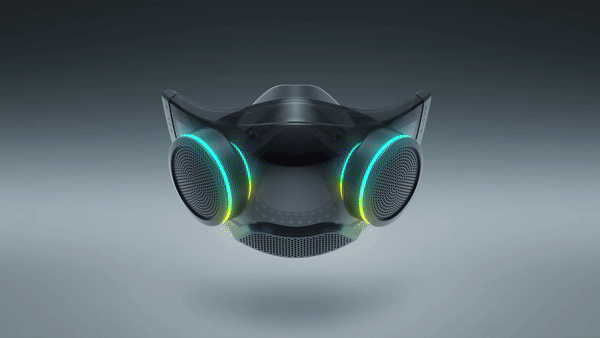Gaming accessory maker Razer scrubbed all references to ‘N95 Grade Filter’ from the web page for its CES concept-turned-actual-product Zephyr masks.
The sudden change took place over the weekend following a PCMag report highlighting issues with the company’s claims. In short, the report details that using an “N95 Grade Filter” in a mask doesn’t make it an N95 mask.
It also outlines how in the U.S., the Centre for Disease Control’s (CDC) National Institute for Occupational Safety and Health (NIOSH) certifies that N95 respirators “used in an occupational setting meet the minimum construction, performance, and respiratory protection standards.” NIOSH also maintains a website listing approved N95 respirators — Razer’s Zephyr masks aren’t on that list.
It’s worth noting that Health Canada similarly keeps a list of authorized medical devices for uses related to COVID-19 but the list does not include Razer’s masks — something I pointed out in coverage of the company’s new Zephyr Pro.
Along with removing the N95 Grade Filter claims, Razer expanded its fine print, going from:
“Razer Zephyr is not a medical device, respirator, surgical mask or personal protective equipment (PPE) and is not meant to be used [in] medical or clinical settings.”
To:
“The Razer Zephyr and Zephyr Pro are not certified N95 masks, medical devices, respirators, surgical masks, or personal protective equipment (PPE) and are not meant to be used in medical or clinical settings.”
Further, Razer’s fine print noted that the company “adopted standards” set by NIOSH, but that it hadn’t been certified by the agency.
The core problem is that Razer walks a fine line with its Zephyr mask by promoting it as a protective device while also skirting around the claim with legal and medical terminology the average person may not understand. For example, it might not be immediately clear to people visiting Razer’s website what the difference is between NIOSH certification and simply adopting the agency’s standards.
Razer did not immediately respond to PCMag’s request for comment, but did provide a statement after publication noting that it was in the process of removing all N95 Grade Filter references from marketing material to “avoid any confusion.” The company also said it would reach out to existing customers to “clarify” what the Zephyr masks can and can’t do. The company also posted the following tweet:
*The Razer Zephyr and Zephyr Pro are not medical devices, respirators, surgical masks, or personal protective equipment (PPE) and are not meant to be used in medical or clinical settings.
— R Λ Z Ξ R (@Razer) January 8, 2022
However, Razer didn’t publicly announce the removal of ‘N95 Grade Filter’ references from its website.
Finally, it’s worth noting that Razer’s original Zephyr mask website still lists the air filters as “FDA-registered,” which seems to be a reference to the fact that Razer filed the Zephyr with the FDA and that’s all.
Ultimately, the main takeaway here is that if you’re looking for a mask to protect yourself from COVID and the ongoing omicron surge, you might want to skip the Razer mask. Sure, it looks cool and has RGB lighting, but until regulatory certification arrives, it’s not clear to what degree the Zephyr masks actually protect people.
Source: PCMag


